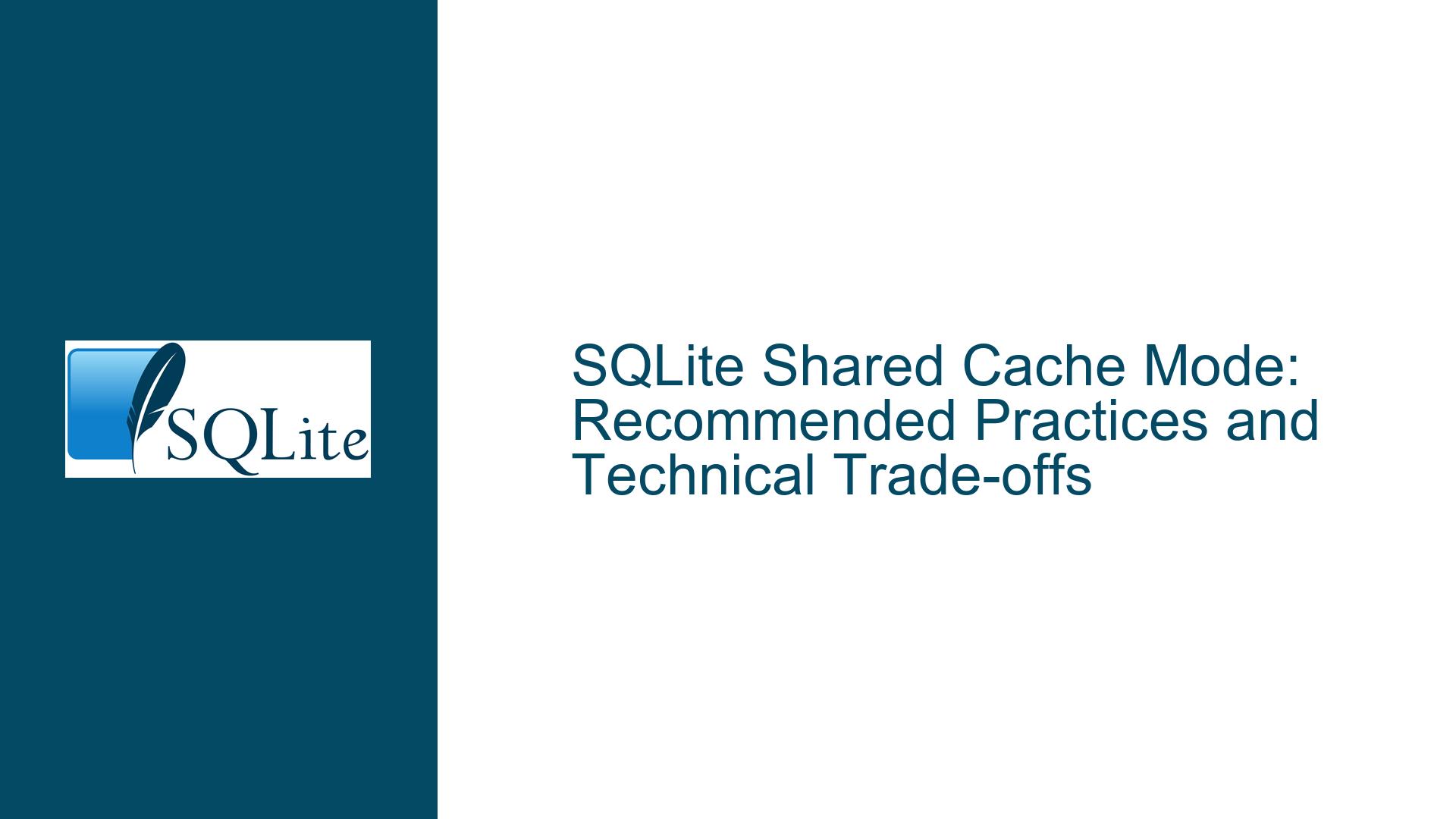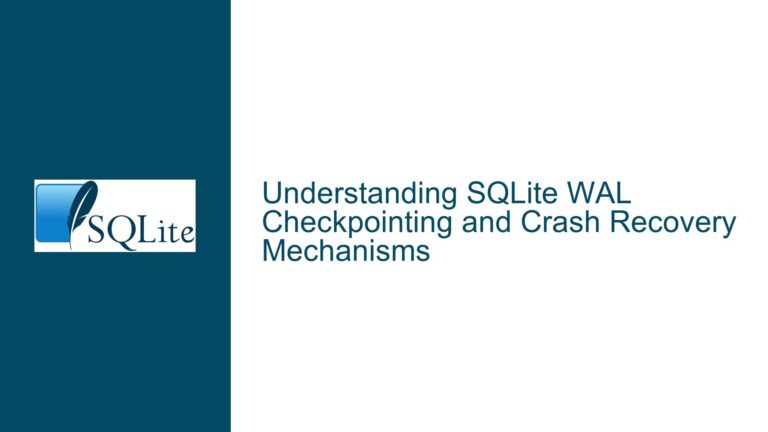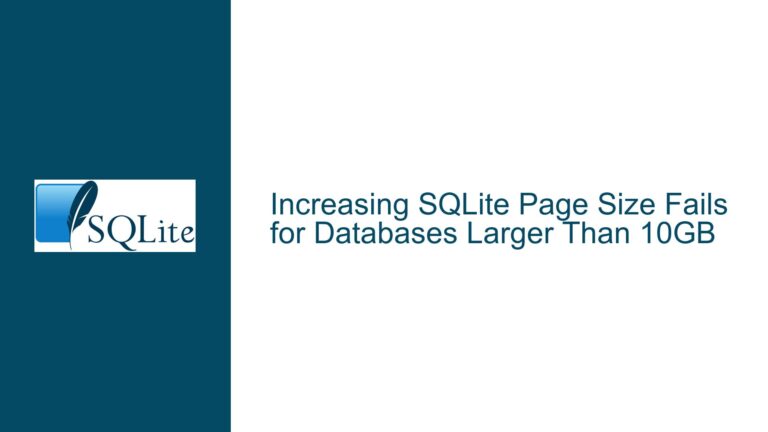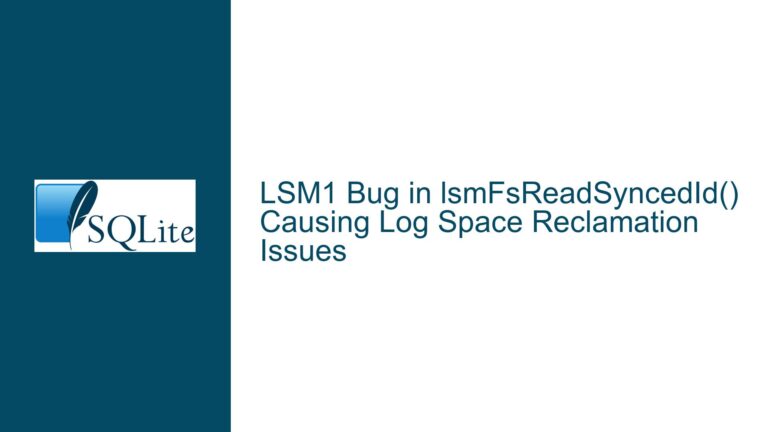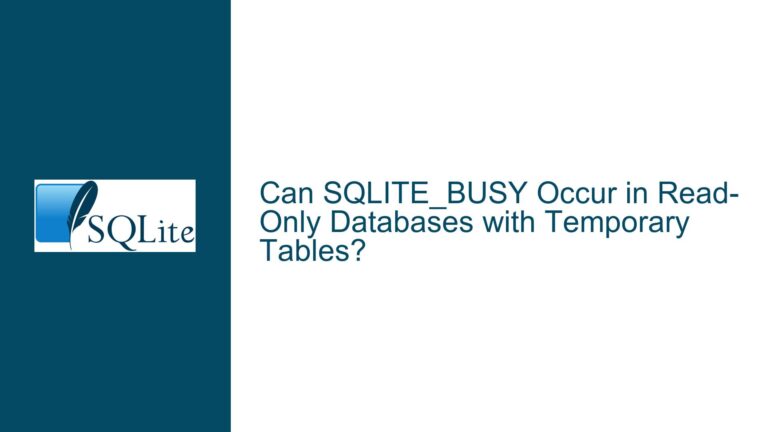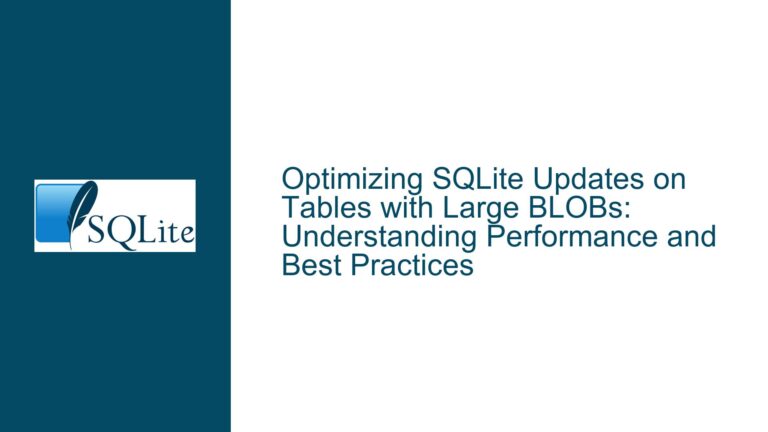SQLite Shared Cache Mode: Recommended Practices and Technical Trade-offs
Understanding the Contradictory Guidance on Shared Cache Mode
The SQLite shared cache mode is a mechanism that allows multiple database connections within the same process to share a single cache and schema data. This feature was introduced to optimize performance in specific scenarios, such as multithreaded applications with concurrent read/write operations. However, its documentation presents conflicting advice:
- The Shared Cache Mode documentation emphasizes its benefits, including reduced memory footprint, minimized I/O operations, and granular locking.
- The
sqlite3_enable_shared_cache()documentation explicitly discourages its use, labeling it as a legacy feature with inherent risks.
This contradiction stems from the evolution of SQLite’s architecture and the nuanced technical trade-offs involved. Shared cache mode offers performance advantages but introduces complex concurrency challenges, particularly when transactions span multiple threads or connections. Recent updates to the documentation (as of August 2022) clarify the official stance: shared cache mode is discouraged due to its potential for subtle bugs, transaction isolation violations, and maintenance overhead.
Key points of confusion include:
- Transaction Isolation: Connections sharing a cache may observe uncommitted changes from other connections, bypassing the default
SERIALIZEDisolation level unless explicitly configured withPRAGMA read_uncommitted=0. - Locking Behavior: Shared cache mode replaces
SQLITE_BUSYerrors withSQLITE_LOCKEDerrors, requiring applications to handle retries differently (e.g., using unlock-notify callbacks). - Legacy Constraints: Early versions of shared cache mode (pre-3.5.0) had critical limitations, such as incompatibility with virtual tables and thread-bound connections. While many issues have been resolved, the historical baggage contributes to lingering skepticism.
Developers are left questioning whether modern SQLite (3.40.0+) has mitigated these risks sufficiently to justify using shared cache mode. The answer hinges on understanding the technical underpinnings and evaluating whether the benefits outweigh the operational complexity.
Technical Risks and Limitations of Shared Cache Mode
Shared cache mode’s discouragement is rooted in its architectural trade-offs and edge-case behaviors. Below are the primary technical risks that justify the cautionary stance:
1. Transaction Isolation Violations
By default, SQLite operates in SERIALIZED isolation mode, ensuring that transactions appear to execute sequentially. However, shared cache mode introduces exceptions:
- Uncommitted Read Visibility: Connections sharing a cache may see uncommitted changes from other connections, even without
PRAGMA read_uncommitted=1. This occurs because the shared cache holds uncommitted data, which becomes visible to other connections before transactions are finalized. - Rollback Hazards: If a transaction is rolled back, connections that accessed its uncommitted data may end up with inconsistent or invalid state.
2. Locking Granularity and Contention
Shared cache mode replaces database-level locks with table-level locks, enabling finer-grained concurrency. However, this introduces new challenges:
- Write-Ahead Logging (WAL) Incompatibility: Shared cache mode cannot be used with WAL mode, forcing applications to rely on the older rollback journal mechanism. This limits performance and concurrency in write-heavy workloads.
- Deadlock Scenarios: Concurrent write operations across shared connections can lead to deadlocks that are harder to diagnose and resolve.
3. Concurrency and Thread Safety
While shared cache mode allows connections to operate across threads, it imposes strict rules:
- Thread-Bound Connections: Each connection must be used exclusively by a single thread, requiring careful thread-local management.
- Unlock-Notify Complexity: Handling
SQLITE_LOCKEDerrors requires non-trivial use of the unlock-notify API, increasing code complexity.
4. Maintenance and Debugging Overhead
Shared cache mode’s behavior diverges significantly from standard SQLite operation, leading to:
- Non-Deterministic Bugs: Issues like phantom reads or lock contention may surface unpredictably.
- Tooling Limitations: Many SQLite debugging tools and extensions assume default isolation and locking behavior, reducing their effectiveness in shared cache environments.
5. Legacy Code and Compatibility
Shared cache mode retains vestigial constraints from older SQLite versions:
- Virtual Table Restrictions: Early implementations could not use virtual tables with shared cache mode. While resolved in 3.6.17+, compatibility issues may still arise.
- Schema Locking: Schema modifications (e.g.,
ALTER TABLE) require exclusive access to the entire cache, blocking all connections during execution.
Mitigation Strategies and Modern Alternatives to Shared Cache Mode
Given the risks outlined above, developers should consider alternatives to shared cache mode whenever possible. When shared cache is unavoidable, adhere to the following best practices:
1. Evaluate Alternatives
- Write-Ahead Logging (WAL) Mode: WAL mode offers superior concurrency for multithreaded applications without shared cache’s pitfalls. It allows simultaneous reads and writes, reduces lock contention, and is compatible with standard connection pooling.
- Connection Pooling: Use a fixed-size pool of dedicated connections (one per thread) with
PRAGMA journal_mode=WALto balance performance and isolation. - In-Memory Databases: For ephemeral data, consider
:memory:databases withSQLITE_OPEN_SHAREDCACHEto enable cross-connection caching without file I/O.
2. If Using Shared Cache: Implement Strict Concurrency Controls
- Enable Read-Uncommitted Isolation: Set
PRAGMA read_uncommitted=0on all connections to enforce serialized isolation and prevent phantom reads. - Use Unlock-Notify: Replace busy-handler loops with unlock-notify callbacks to handle
SQLITE_LOCKEDerrors efficiently. - Avoid Cross-Thread Connection Sharing: Assign each connection to a single thread and use thread-local storage to enforce ownership.
3. Schema and Transaction Management
- Minimize DDL Operations: Avoid schema changes (e.g.,
ALTER TABLE) during peak usage to prevent cache-wide locks. - Short-Lived Transactions: Commit or roll back transactions promptly to reduce lock contention.
- Explicit Locking: Use
BEGIN IMMEDIATEorBEGIN EXCLUSIVEtransactions to preemptively acquire locks and avoid deadlocks.
4. Monitoring and Debugging
- Enable Diagnostics: Compile SQLite with
-DSQLITE_DEBUGand usesqlite3_trace_v2()to log lock states and transaction boundaries. - Stress Testing: Simulate high-concurrency scenarios to uncover race conditions or deadlocks.
5. Migration Plan
- Phase Out Shared Cache: Gradually replace shared cache connections with WAL-mode connections, using compatibility shims if necessary.
- Refactor Unlock-Notify Logic: Replace unlock-notify handlers with standard busy-timeout handlers during migration.
By prioritizing modern concurrency mechanisms like WAL mode and adhering to strict isolation practices, developers can avoid shared cache mode’s risks while achieving comparable performance gains. The SQLite team’s discouragement of shared cache reflects its niche applicability and the availability of safer alternatives in contemporary deployments.
